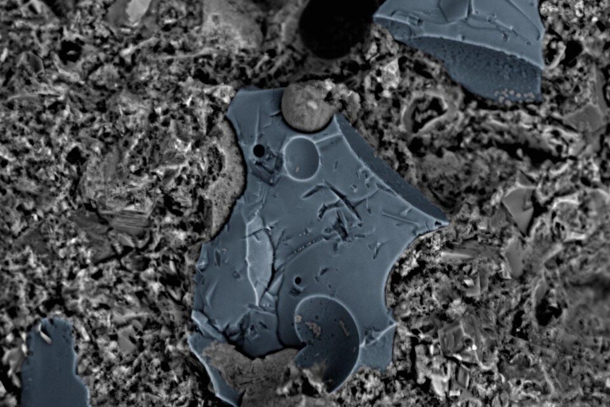
Lunar concrete similar to this sample could be used one day to build structures on the moon, but researchers need to understand its behavior in microgravity first. In this colorized microscopic image, artificial regolith (blue) is mixed with Portland cement (gray). IMAGE: PETER COLLINS
NASA features concrete project led by Penn State
4/19/2022
By Lauren Colvin
UNIVERSITY PARK, Pa. — The Microgravity Investigation of Cement Solidification project, an ongoing endeavor run by the Concrete Research Group at Penn State, was featured on NASA’s website as one of five research studies contributing to deep space exploration. All five studies were conducted on the International Space Station in 2021.
Aleksandra Radlińska, associate professor of civil engineering, leads the Concrete Research Group and MICS project. The project’s findings, published in Concrete and Building Materials, suggest lunar dust might be a feasible building material for lunar bases. The MICS project is a collaboration between Penn State and NASA researchers.
In the project’s next phase, Peter Collins, a civil engineering doctoral candidate, is investigating the use of lunar material for extraterrestrial construction. He is funded by a NASA Space Technology Graduate Research Opportunity grant.
MICS researchers also prepared samples that are mounted to the outside of the International Space Station to study materials’ performance under space exposure.
To scale these experiments, Namiko Yamamoto, associate professor of aerospace engineering, was awarded a grant by NASA’s Physical Sciences Research Program to create a micromechanics-based model of cement’s performance in a microgravity environment based on microscopic images of the space station samples.
Collaborators on MICS project also include NASA researchers Brett Bednarcyk, Evan Pineda, Louise Littles, Jennifer Edmunson, and Mike Fiske, engineering technical fellow at Jacobs Space Exploration Group.



